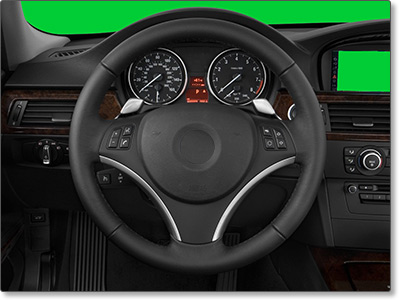A Simulator’s Story

Why would I want the Experience API?
Let’s look at a story.
Mark’s parents want him to take a driver’s education course (partly because it saves them money on their car insurance premiums, but mostly because they want him to be safe.)
Part of Mark’s course requires him to spend some time in a simulator that makes him feel as if he were actually out on the road, driving different routes. He has to master a number of hours in the simulator before he gets on the “real” road.
This driving simulator is networked with other simulators. Mark is “virtually” sharing the road with other student drivers that are in their own simulators as well.
In order to pass the simulator section of his driver’s education course, Mark has to pass three levels of the car simulator. Level one is basic driving, level two is interstate driving and parallel parking, level three is logging a 15 hour freestyle drive in the simulator with no more than five mistakes.
Let's tell Mark's driver's education car simulation story with xAPI statements:
| Mark’s Experience | Experience API Statement |
| Mark adjusted his rearview mirror. | Mark completed “adjusting rearview mirror.” |
| Mark put on his seatbelt. | Mark completed “wearing seatbelt.” |
| Mark started the car. | Mark completed “car starting.” |
| Mark turned on his headlights. | Mark completed “turn on headlights” with outside darkness of 80%. |
| Mark started driving. | Mark completed “accelerating the car.” |
| Mark turned on his left turn signal. | Mark completed “turning on left signal” for a left turn. |
| Mark turned left. | Mark completed “20 MPH turn” at 18 MPH. |
| Mark logged 5 hours of basic driving time. | Mark completed hour 5 of “interstate driving” with 2 errors. |
| Mark passed level 1. | Mark passed level 1 of driver’s education car simulation. |
| Mark learned how to parallel park. | Mark completed “parallel parking” with a result of “success”. |
| Mark logged 5 hours of interstate driving. | Mark passed level 1 of driver’s education car simulation. |
| Mark passed level 2. | Mark passed level 2 of driver’s education car simulation. |
| Mark drove freestyle for 3 hours while other drivers Julie, Pat, Roger and Kyle were driving in the simulation simultaneously. | Mark completed hour 3 of freestyle driving. Mark interacted in “driver’s education simulation” with Julie, Pat, Roger and Kyle. |
| The instructor changed the weather conditions to make it rain. | Mark experienced “heavy rainfall” in driver’s education simulation. |
| A deer crossed the road, and Mark successfully stopped and avoided a collision. | Mark experienced “deer crossing road” with a result of “success.” |
| Mark completed level 3. | Mark passed level 3 of driver’s education simulation. |
Simulators are an immersive way to learn, but the data they generate and the means by which they generate that data aren’t like other types of learning.
Traditional e-learning standards are largely meant for tracking “page turner” style learning content that lives inside a web browser — very different from a simulator.
Other e-learning standards don’t allow for long-term tracking like you’d often see with a simulation.
In reporting systems, usually the learning data generated by simulations lives on its own, outside of the systems that track other types of learning. But there’s a ton of value to letting all of this data exist in one system — you can analyze all of the data at once (data from the simulation mixed with data from traditional learning) and pick out trends and suggestions based on the entire picture of learning. Plus, the data can stay with the learner for life. Mark’s next insurance company can import his driver’s education statements into their LRS, and continue to give him his discounted premiums.
The Experience API allows you to do all of these things.